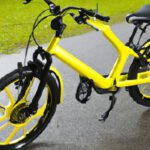
As we approach 2025, the transportation landscape is undergoing radical transformation. From the urban sprawls of major cities to the quiet countrysides, electric bikes and scooters are making an indelible mark. But how did we get here? And could these compact electric vehicles really outpace cars? Let’s delve in.
The Evolution of E-Transport
The last decade has seen an enormous surge in the popularity of e-bikes and e-scooters. While cars have been the primary mode of transport for the better part of a century, the rising costs of vehicle ownership and maintenance, coupled with environmental concerns, have shifted the focus towards more sustainable and pocket-friendly options.
Micro-mobility: The Urban Solution
As city populations swell, the streets are getting congested, and parking spaces are at a premium. The compact nature of electric scooters makes them perfect for zipping through traffic, and they require minimal parking space. Furthermore, they offer a greener alternative to gas-powered vehicles, aligning with the urban push towards sustainability.
Electric Bikes: More than Just Transport
Once seen only as an alternative mode of transport, electric bikes have now assumed varied roles. For fitness enthusiasts looking for an innovative way to shed those extra pounds, e-bikes offer a perfect blend of manual pedaling and electric assistance. For adventure seekers, there’s the thrill of using an electric bike for hunting. And for those who crave the latest tech, bikes like the Talaria Sting-R represent the pinnacle of e-bike innovation.
The Affordability Factor
One of the most compelling arguments for e-bikes and scooters is their cost-effectiveness. Compared to a car, the best affordable electric bikes offer significant savings, both in terms of purchase price and maintenance. There’s also the added benefit of not having to pay for gas, parking, or tolls in many places.
Challenges and Concerns
It’s not all smooth riding for e-bikes and scooters. There are genuine concerns about their durability, especially in adverse weather conditions. Questions like, “Are electric bikes waterproof?” underline the need for potential users to be well-informed. Additionally, while brands like Jetson are gaining traction, it’s essential for consumers to ask, “Are Jetson electric bikes any good?” and make informed choices.
External Factors: Infrastructure and Policy
For e-bikes and scooters to genuinely surpass cars, there’s a need for more than just enthusiastic consumers. City planners and policymakers need to play their part. Creating bike lanes, ensuring safety standards, and offering incentives can go a long way. Cities like Amsterdam and Copenhagen have set a precedent, and others must follow. Check out this external article from BBC that explores how city planning impacts bike usage.
The Future is Electric
With advancements in battery technology, innovative designs, and an ever-growing emphasis on sustainability, it’s not far-fetched to predict that e-bikes and scooters might soon outpace cars, especially in urban settings. The world is gearing up for an electric future, and we at ReviewVolt are excited to be part of this journey.
Stay tuned for more insights, reviews, and the latest trends in electric transportation, only on ReviewVolt!




















